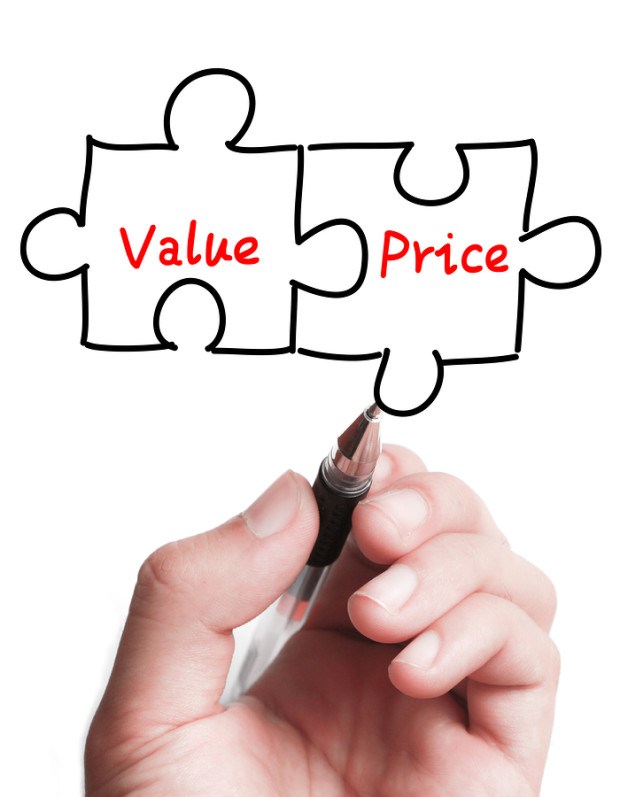How can a company liberate itself from the death spiral of product commoditization?
Competing on price is generally a losing proposition—and a very exhausting way to run a business. But when a market matures and customers start focusing on price, what’s a business to do?
Executive Summary
Competing on price is generally a losing proposition—and a very exhausting way to run a business. But when a market matures and customers start focusing on price, what’s a business to do? The answer, as counterintuitive as it may seem, is to deliver a better customer experience, says Watermark Consulting’s Jon Picoult.Here Picoult urges insurers to follow the examples of Nike, Starbucks and Apple—companies that broke free from the commodity quicksand by creating an experience their target market was willing to pay more for.
The answer, as counterintuitive as it may seem, is to deliver a better customer experience.
It’s a proposition some executives would reject outright. After all, a better customer experience costs more to deliver, right? How on earth could that be a beneficial strategy for a company that’s facing commoditization pressures?
Go From Commodity to Necessity
There are two ways that a great customer experience can improve price competitiveness, and the first involves simply removing yourself from the price comparison arena.
Consider those companies that have flourished selling products or services that were previously thought to be commodities: Starbucks and coffee, Nike and sneakers, Apple and laptops. They all broke free from the commodity quicksand by creating an experience their target market was willing to pay more for.
They achieved that, in part, by grounding their customer experience in a purpose-driven brand that resonated with their target market.
Nike, for example, didn’t purport to just sell sneakers; it aimed to bring “inspiration and innovation to every athlete in the world.” Starbucks didn’t focus on selling coffee; it sought to create a comfortable “third place” (between work and home) where people could relax and decompress. Apple’s fixation was never on the technology but rather on the design of a simple, effortless user experience.
But these companies also walk the talk by engineering customer experiences that credibly reinforce their brand promise (take, for example, the carefully curated sights, sounds and aromas in a Starbucks coffee shop or the seamless cross-platform integration across Apple devices).
The end result is that these companies create something of considerable value to their customers. Something that ceases to be a commodity and instead becomes a necessity. Something that people are simply willing to pay more for.
That makes their offerings more price competitive—but not because they’re matching lower-priced competitors. Rather, despite the higher price point, people view these firms as delivering good value, in light of the rational and emotional satisfaction they derive from the companies’ products.
The lesson: Hook customers with both the mind and the heart, and price commoditization quickly can become a thing of the past.
Gain Greater Pricing Latitude
Creating a highly appealing brand experience certainly can help remove a company from the morass of price-based competition. But the reality is that price does matter. While people may pay more for a great customer experience, there are limits to how much more.
And so, even for those companies that succeed in differentiating their customer experience, it remains important to create a competitive cost structure that affords some flexibility in pricing without crimping margins.
At first blush, these might seem like contradictory goals: a better customer experience and a more competitive cost structure. But the surprising truth is that these two business objectives are actually quite compatible.
A great customer experience can actually cost less to deliver, thanks to a fundamental principle that many businesses fail to appreciate: Broken or even just unfulfilling customer experiences inevitably create more work and expense for an organization.
That’s because subpar customer interactions often trigger additional customer contacts that are simply unnecessary. Some examples:
- An individual receives an Explanation of Benefits (EOB) from his health insurer for a recent medical procedure. The EOB is difficult to read, let alone interpret. What does the insured do? He calls the insurance company for clarification.
- A cable TV subscriber purchases an add-on service, but the sales representative fails to fully explain the associated charges. When the subscriber’s next cable bill arrives, she’s unpleasantly surprised and believes an error has been made. She calls the cable company to complain.
- A mutual fund investor requests a change to his account. The service representative helping him fails to set expectations for a return call. Two days later, having not heard from anyone, what does the investor do? He calls the mutual fund company to follow up on the request.
- A student researching a computer laptop purchase on the manufacturer’s website can’t understand the difference between two closely related models. To be sure that he orders the right one for his needs, what does he do? He calls the manufacturer.
- An insurance policyholder receives a contractual amendment to her policy that fails to clearly explain, in plain English, the rationale for the change and its impact on her coverage. What does the insured do? She calls her insurance agent for assistance.
In all of these examples, less than ideal customer experiences generate additional calls to centralized service centers or field sales representatives. But the tragedy is that a better experience upstream would eliminate the need for many of these customer contacts.
Every incoming call, email, tweet or letter drives real expense—in service, training and other support resources. Plus, because many of these contacts come from frustrated customers, they often involve escalated case handling and complex problem resolution, which, by embroiling senior staff, managers and executives in the mess, drives the associated expense up considerably.
Studies suggest that at most companies, as many as a third of all customer contacts are unnecessary—generated only because the customer had a failed or unfulfilling prior interaction (with a sales rep, a call center, an account statement, etc.).
In organizations with large customer bases, this easily can translate into hundreds of thousands of expense-inducing (but totally avoidable) transactions.
By inflating a company’s operating expenses, these unnecessary customer contacts make it more difficult to price aggressively without compromising margins.
If, however, you deliver a customer experience that preempts such contacts, it helps control (if not reduce) operating expenses, thereby providing greater latitude to achieve competitive pricing.
Putting the Strategy to Work
If your product category is devolving into a commodity (a prospect that doesn’t require much imagination on the part of insurance executives), break from the pack and increase your pricing leverage with these two tactics:
- Pinpoint what’s really valuable to your customers.
Starbucks tapped into consumers’ desire for a “third place” between home and work—a place for conversation and a sense of community. By shaping the customer experience accordingly (and recognizing that the business was much more than just a purveyor of coffee), Starbucks set itself apart in a crowded, commoditized market.
Insurers should similarly think carefully about what really matters to their clientele and then engineer a product and service experience that capitalizes on those insights. Commercial policyholders, for example, care a lot more about growing their business than insuring it. Help them on both counts and they’ll be a lot less likely to treat you as a commodity supplier.
- Figure out why customers contact you.
Apple has long had a skill for understanding how new technologies can frustrate rather than delight customers. The company used that insight to create elegantly designed devices that are intuitive and effortless to use. (Or, to invoke the oft-repeated mantra of Apple founder Steve Jobs, “It just works.”)
Make your customer experience just as effortless by drilling into the top 10 reasons customers contact you in the first place. Whether your company handles a thousand customer interactions a year or millions, don’t assume they’re all “sensible” interactions. You’ll likely find some subset that are triggered by customer confusion, ambiguity or annoyance—and could be preempted with upstream experience improvements, such as simpler coverage options, plain language policy documents or proactive claim status notifications.
By eliminating just a portion of these unnecessary, avoidable interactions, you’ll not only make customers happier, you’ll make your whole operation more efficient. That, in turn, means a more competitive cost structure that can support more competitive pricing.
Whether it’s coffee, sneakers, laptops or insurance, every product category eventually matures and the ugly march toward commoditization begins. In these situations, the smartest companies recognize that the key is not to compete on price but on value.
They focus on continuously refining their brand experience—revealing and addressing unmet customer needs, identifying and preempting unnecessary customer contacts.
As a result, they enjoy reduced price sensitivity among their customers, coupled with a more competitive cost structure. And that’s the perfect recipe for success in a crowded, commoditized market.





















 Active Workstations May Improve Cognitive Performance: Study
Active Workstations May Improve Cognitive Performance: Study  Poll: Consumers OK With AI in P/C Insurance, but Not So Much for Claims and Underwriting
Poll: Consumers OK With AI in P/C Insurance, but Not So Much for Claims and Underwriting  CEO Viewpoint: Predict and Prevent Just Makes Economic Sense
CEO Viewpoint: Predict and Prevent Just Makes Economic Sense  Viewpoint: Risks for D&O Insurers Exploring the New Frontier of Gen AI
Viewpoint: Risks for D&O Insurers Exploring the New Frontier of Gen AI 












